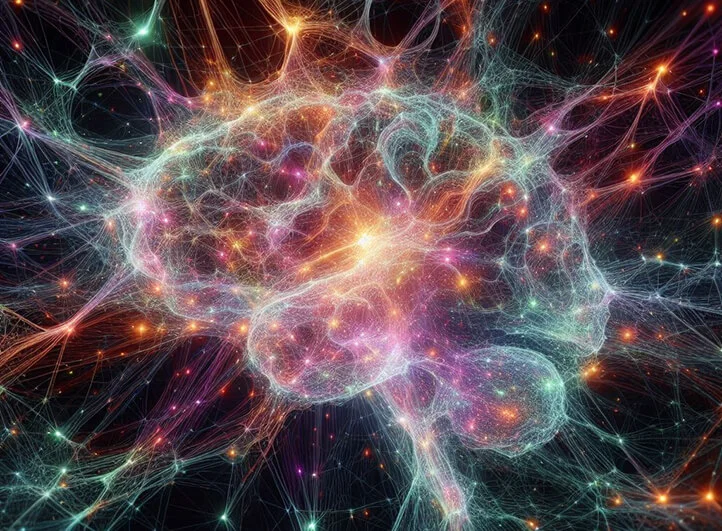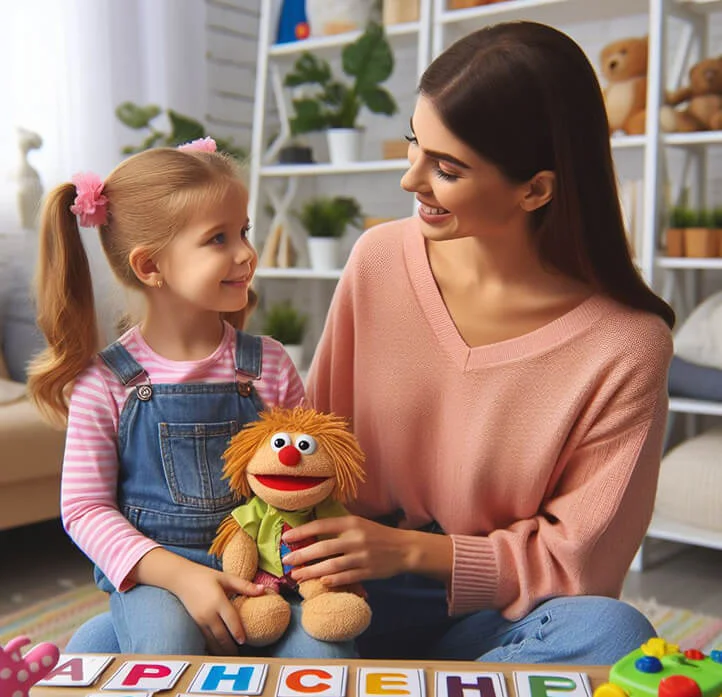Autism Spectrum Disorder (ASD) is a complex neurological disorder characterized by difficulties in social interaction, communication, and restricted, repetitive patterns of behavior, interests, and activities. ASD is referred to as a “spectrum” because the symptoms and their severity can vary greatly among individuals.
According to estimates from the Centers for Disease Control and Prevention (CDC), in 2020, autism spectrum disorder was diagnosed in about 1 in 44 children aged 8 years in the United States. This shows a significant increase compared to previous years, which may be due to both improved diagnosis and a real rise in cases. It is important to note that ASD occurs across all ethnic, racial, and socioeconomic groups.
The term “autism” was first introduced in 1911 by Swiss psychiatrist Eugen Bleuler to describe people who avoided social contact and were immersed in their inner world. However, the first detailed clinical description of autism was presented by American psychiatrist Leo Kanner in 1943 in his work “Autistic Disturbances of Affective Contact.” He described a group of children who exhibited extreme social withdrawal, unusual speech and behavior patterns, and a lack of interest in social interaction.
Since then, the understanding and diagnosis of autism spectrum disorder have advanced significantly. In 2013, the American Psychiatric Association combined previous separate diagnoses (autism, Asperger’s syndrome, childhood disintegrative disorder, etc.) into one category of ASD in the revised Diagnostic and Statistical Manual of Mental Disorders (DSM-5). This change reflects the modern understanding of autism as a spectrum of conditions with varying degrees of severity and manifestations.

Key Signs and Symptoms of Autism Spectrum Disorder
Autism spectrum disorder is characterized by a wide range of symptoms affecting social interaction, communication, and behavior. However, it is important to remember that each person with ASD is unique, and symptoms may present differently depending on individual characteristics and the severity of the condition.
The main diagnostic criteria for ASD are persistent deficits in two key areas: deficits in social communication and interaction, and restricted, repetitive patterns of behavior, interests, or activities. These manifestations may be noticeable as early as childhood, usually by the age of 3.
It is important to emphasize that the symptoms of ASD can vary significantly in severity and form. Some individuals with autism spectrum disorder may be nonverbal, while others may demonstrate strong language abilities. There may also be exceptional abilities or talents in certain areas such as music, art, or mathematics.
Difficulties in social interaction and communication
- Difficulties with social communication and interaction. People with ASD may struggle with understanding social cues, maintaining conversations, and sharing experiences or interests with others.
- Challenges in establishing and maintaining eye contact. People with ASD may avoid eye contact or use it excessively.
- Limited use and understanding of gestures and facial expressions. They may not fully understand or may misinterpret nonverbal signals.
- Difficulties understanding social norms and rules, humor, sarcasm, and metaphors.
- Impaired ability to develop and maintain peer relationships. Individuals with ASD often find it difficult to form and maintain friendships.
Restricted, repetitive patterns of behavior, interests, and activities
- Stereotypical or repetitive movements. These may include rocking, hand-flapping, jumping, or unusual postures.
- Excessive interest or narrow focus. There may be an intense fixation on one or more specific interests that are unusual or overly narrow.
- Strict adherence to certain nonfunctional rituals. There may be a strong desire to follow strict rules, even if they serve no practical purpose.
- Hypersensitivity or underreaction to sensory stimuli. People with ASD may have unusual reactions to smells, tastes, textures, sounds, or visual stimuli.
- Difficulty transitioning from one activity to another. Individuals with autism spectrum disorder may have significant problems switching from one activity to another or with any changes to their usual routine.
It is important to note that the symptoms and severity of ASD can vary greatly among individuals, reflecting the “spectrum” nature of the condition. Some individuals with ASD may have exceptional abilities or talents in certain areas such as music, art, or mathematics.

Causes and Risk Factors for Autism Spectrum Disorder
The causes of autism spectrum disorder remain unclear, but most research points to a complex interaction between genetics and the environment. ASD is not caused by a single gene or environmental factor, but rather arises from a combination of these influences.
It is believed that genetics plays a significant role in the development of autism. Research shows that if one child in a family has autism spectrum disorder, the risk for subsequent children is significantly higher compared to the general population. Scientists have already identified hundreds of genes that may be linked to autism, though none have been established as the sole cause.
Certain environmental factors that affect fetal development during pregnancy may also play a role. Potential risk factors include exposure to specific toxins or viral infections, complications during birth, and other prenatal or perinatal factors. However, the causal link between specific environmental exposures and autism remains unclear.
In general, current research suggests that autism spectrum disorder most likely results from complex interactions between multiple genes and environmental factors affecting brain development in early childhood. Ongoing research in this field is crucial for better understanding the causes and mechanisms underlying autism spectrum disorder.
Genetic factors
- Heredity. Studies indicate that genetics plays an important role in the development of ASD. If one child in a family has autism spectrum disorder, the risk for subsequent children is about 20%, much higher than in the general population (about 1-2%).
- Identified genes. Hundreds of genes have been identified that may be linked to the development of ASD, such as genes involved in synapse formation, transcription regulation, and others. However, none of these are a sole cause of autism spectrum disorder.
- Genetic syndromes. Some genetic syndromes and chromosomal disorders, such as fragile X syndrome, Rett syndrome, tuberous sclerosis, and others, may increase the risk of ASD.
Environmental factors
- Prenatal factors. Some factors affecting fetal development during pregnancy, such as exposure to certain toxins, viral infections (rubella, cytomegalovirus, etc.), placental problems, or complications during childbirth, may increase the risk of ASD in a child. However, the link between these factors and autism remains ambiguous.
- Perinatal factors. Premature birth, low birth weight, and birth injuries are also associated with an increased risk of autism spectrum disorder, but their exact role requires further study.
- Environmental pollutants. There is some evidence that exposure to certain environmental pollutants, such as pesticides, heavy metals, or toxic chemicals, may affect brain development and increase the risk of autism. However, this data is also ambiguous and requires further research.
It is important to remember that no single environmental factor has been definitively identified as the cause of ASD.
Combination of Genetic and Environmental Factors
Most research indicates that autism spectrum disorder is most likely caused by a complex interaction between multiple genes and environmental factors. This combination may affect brain development in early childhood, leading to the characteristic symptoms of ASD.
Scientists continue to study specific genes and mechanisms underlying the development of autism, as well as the role of various environmental exposures. Understanding the causes of autism spectrum disorder is essential for developing effective methods of prevention, diagnosis, and treatment in the future.

Diagnosis of Autism Spectrum Disorder
The diagnosis of Autism Spectrum Disorder (ASD) is crucial for ensuring timely and appropriate intervention and support. Diagnosing ASD in early childhood can significantly improve a child’s developmental prognosis and increase the effectiveness of therapeutic interventions.
The diagnosis of “Autism Spectrum Disorder” is a complex process that requires the involvement of a team of qualified specialists, including psychiatrists, psychologists, speech therapists, pediatricians, and other professionals. The diagnosis is based on comprehensive observation of the child’s behavior, thorough collection of developmental history, use of standardized diagnostic tools, and exclusion of other possible causes of the observed symptoms.
A key element in diagnosing ASD is identifying characteristic impairments in two main areas: persistent deficits in social communication and social interaction, as well as restricted, repetitive patterns of behavior, interests, or activities. These symptoms must be present in early childhood and limit or disrupt daily functioning.
However, it is important to understand that Autism Spectrum Disorder represents a continuum of conditions with a wide range of manifestations and symptom severity. Some children with ASD may demonstrate exceptional abilities in certain areas that compensate for their deficits in others. Additionally, the symptoms of autism may change with age, requiring periodic reassessment of the child’s condition.
Diagnostic Methods
- Observation of the child’s behavior. Specialists carefully observe the child and assess their social interaction, communication, play behavior, interests, and other areas of development in various situations.
- Standardized tests and questionnaires. Special tools such as the Autism Diagnostic Observation Schedule (ADOS) and Autism Diagnostic Interview-Revised (ADI-R) are used to identify characteristic signs of Autism Spectrum Disorder based on clear criteria and to assess the severity of symptoms.
- Analysis of developmental history. Parents provide detailed information about the child’s early development, achievements, or delays in speech, social skills, play activities, and other areas, as well as any unusual behaviors.
- Exclusion of other possible causes. Doctors may perform additional medical tests (genetic analyses, neuroimaging, hearing and vision assessments, etc.) to rule out other conditions with similar symptoms, such as intellectual disability, hearing impairment, or other neurological disorders.
- Comprehensive evaluation. A final diagnosis of “Autism Spectrum Disorder” requires a comprehensive evaluation of all areas of development, the degree of impairment, co-occurring conditions, and exclusion of alternative causes of the symptoms.
The Importance of Early Diagnosis
Early diagnosis of Autism Spectrum Disorder (at the age of 18-24 months or even earlier) is critical as it allows for early intervention and therapy, which can significantly improve a child’s developmental prognosis and long-term outcomes. Research shows that early intensive therapy can substantially enhance the cognitive, linguistic, and social development of children with autism.
Early diagnosis also helps families better understand their child’s characteristics, access the necessary support, and receive appropriate services and programs. This reduces stress and improves the quality of life for the entire family.
Differential Diagnosis
Since ASD symptoms may overlap with other conditions, such as speech delay, intellectual disability, sensory impairments, or other neurological disorders, it is essential to conduct a thorough differential diagnosis to rule out alternative causes of the observed symptoms.
Specialists must consider the child’s overall level of development, learning abilities, the presence or absence of developmental regression, and any co-occurring medical or neurological conditions. In some cases, additional observation and testing may be required to clarify the diagnosis.
It is also important to note that Autism Spectrum Disorder can coexist with other disorders, such as intellectual disability, epilepsy, attention deficit hyperactivity disorder (ADHD), or anxiety disorders. In such cases, a comprehensive treatment and support plan is needed to meet all of the child’s needs.

Therapeutic Approaches and Interventions
There is no one-size-fits-all treatment for people with Autism Spectrum Disorder. Instead, a comprehensive approach is used, which includes various types of therapy and interventions aimed at improving skills and functioning in different areas. Therapeutic programs are usually developed individually based on the specific needs and goals of each person with ASD.
Behavioral Therapy
One of the most widely used and effective approaches is behavioral therapy based on the principles of Applied Behavior Analysis (ABA). The goal of ABA therapy is to develop new skills and reduce undesirable behavior through systematic use of rewards, positive reinforcement, and structured teaching methods.
- Early Intensive Behavioral Intervention (EIBI). This type of therapy usually starts at an early age (before age 5) and includes intensive (up to 40 hours per week) structured sessions to develop social, communication, academic, and daily living skills. Research shows that EIBI can significantly improve the cognitive and adaptive abilities of children with Autism Spectrum Disorder.
- Verbal Behavior Intervention. This ABA-based approach focuses on developing language and communication skills through motivated learning, reinforcement, and specific techniques.
- Skills training. ABA therapy can also be used to teach specific skills, such as social interaction, emotional regulation, self-care, and vocational skills.
Speech Therapy
Speech therapists work on developing communication skills, including speech, non-verbal communication, and the use of alternative communication methods (gestures, picture cards, communication boards, etc.).
Main areas of speech therapy:
- development of expressive speech (the ability to express thoughts and needs);
- development of receptive speech (understanding spoken language);
- teaching the social use of language (dialogue, considering context);
- use of alternative and augmentative communication systems (AAC) for children who have difficulty with speech;
- development of articulation, voice, and intonation skills.
Therapy is conducted using play-based methods, visual cues, positive reinforcement, and is adapted to each child’s abilities and developmental level.
Sessions with a Psychologist
Psychologists use various forms of therapy to help people with ASD develop social skills, emotional regulation, and improve overall quality of life.
- Cognitive-behavioral therapy (CBT) can be used to manage anxiety, depression, and problem behavior.
- Social training and group sessions focus on developing communication skills, recognizing emotions, making friends, and more.
- Play therapy helps children express emotions and develop interaction skills in a safe environment.
- Psychologists also work with families, teaching parents effective parenting strategies and improving their own well-being.
Medication Treatment
Although there are no medications specifically designed to treat the core symptoms of Autism Spectrum Disorder, certain medications may be prescribed to alleviate associated issues such as:
- anxiety and depression (antidepressants, anxiolytics);
- hyperactivity and attention deficits (stimulants);
- aggressive or self-injurious behavior (antipsychotics, mood stabilizers);
- seizures and epilepsy (anticonvulsants).
However, the effectiveness and safety of these medications in individuals with ASD require further study. It is also essential to remember that medications should always be prescribed and monitored solely by a physician.
Alternative and Complementary Therapies
Some families may also use alternative or complementary therapies, such as:
- special diets (casein-free, gluten-free);
- vitamins and dietary supplements;
- animal-assisted therapy;
- music therapy;
- art therapy;
- sensory integration therapy.
Overall, the most effective approach is a comprehensive one, combining various therapies and interventions tailored to the specific needs and goals of the person with ASD.

Support and Resources
People with autism spectrum disorder (ASD) and their families can receive support from various sources, including educational programs, social services, charitable and governmental organizations. Having access to appropriate resources and support is critical for improving the quality of life and ensuring the full integration of people with ASD into society.
Educational and Social Programs
- Special Education. Children with autism spectrum disorder are entitled to an Individualized Education Plan (IEP) and special educational services in public schools, such as teacher assistants, curriculum modifications, behavioral support, and more.
- Early Intervention Programs provide comprehensive services for children under the age of 3 who have ASD or are at risk of developmental delays, including therapy, parent education, and service coordination.
- Vocational Training and Employment Programs. As individuals with autism spectrum disorder grow older, they can receive assistance in developing vocational skills, writing resumes, preparing for interviews, and finding suitable employment.
- Social Interaction Programs. Support groups, social events, and organized gatherings help develop social skills and provide opportunities to interact with peers who share similar experiences.
- Residential Services. In some countries, there are various housing program options, from family homes to independent supported living, tailored to meet the needs of adults with ASD.
Family Support and Counseling
Parents and family members of children and adults with autism spectrum disorder can receive support and counseling on parenting, education, caregiving, and their own well-being. Many organizations offer the following services:
- Educational programs and workshops for parents;
- Individual counseling and support groups;
- Advocacy and protection of family rights and interests;
- Respite care services for parents;
- Assistance in obtaining resources and financial support.
The availability of such support is crucial, as raising a child with autism spectrum disorder is often accompanied by significant stress and emotional strain on the family.
Organizations and Communities
There are organizations that advocate for the rights and interests of people with autism spectrum disorder, conduct research, raise public awareness, and provide resources and support. Some of them include:
- Autism Speaks (www.autismspeaks.org);
- Autism International Community (www.autism.net);
- Autism Society of America (www.autism-society.org);
- Ukrainian Independent Information Resource (www.autism.ua).
Participation in such organizations and communities allows families to access necessary resources, receive up-to-date information, share experiences, and feel less isolated.
Government Programs and Benefits
In most countries, there are government programs and benefits aimed at supporting individuals with autism spectrum disorder and their families. For example, in the United States, the following programs are available:
- Medicaid – a health insurance program for low-income individuals;
- Vocational rehabilitation and employment programs;
- Housing assistance and supported living programs;
- Tax benefits and credits for families with children with ASD.
It is essential to regularly monitor available resources and support programs, as they may vary by region and change over time. Many organizations also offer informational resources and assistance in navigating the support system.

Challenges and Issues
Despite increasing awareness and acceptance of autism, people with autism spectrum disorder and their families still face several challenges that require further efforts from society, the government, and the healthcare system.
Social Stigma and Misunderstanding
- Lack of Knowledge and Common Myths. A lack of understanding and widespread myths in society can lead to the perpetuation of stereotypes and misunderstandings about people with ASD.
- Stigmatization and Discrimination. Due to misunderstandings about the characteristics of autism spectrum disorder, people with autism often face social stigma, prejudice, and discrimination in various areas of life.
- Social Isolation. Difficulties in social interaction and communication can lead to social isolation for individuals with ASD and their families.
- The Need to Raise Awareness. It is important to continue efforts to raise public awareness about autism, combat stereotypes, and create a more inclusive environment.
Common Myths About People with Autism Spectrum Disorder
Myth 1: People with autism do not want to communicate and avoid social contact.
- People with ASD do not intentionally avoid communication. They have difficulties with social interaction, communication, and understanding social cues due to brain development characteristics. Many people with autism want to communicate but struggle with establishing and maintaining contact.
Myth 2: Autism is caused by poor parenting or parenting style.
- Autism is a neurological disorder caused by a complex interaction of genetics and environmental factors that affect brain development. Parenting or communication style has nothing to do with the causes of autism spectrum disorder.
Myth 3: People with autism are intellectually disabled or “broken.”
- Autism is not related to intelligence levels. People with autism spectrum disorder can have varying cognitive abilities, from intellectual disability to very high IQs. They simply perceive and process information differently.
Myth 4: Autism can be completely cured through a special diet or medication.
- Currently, there are no medications or diets that can completely cure autism spectrum disorder. Therapy and medical interventions aim to develop skills to improve functioning, but not to eliminate the condition itself.
Myth 5: People with autism lack empathy and emotions.
- People with ASD experience a full range of emotions but may have difficulty recognizing and expressing them. They are also capable of empathy but may demonstrate it in different ways.
It is important to debunk these and other myths to combat stigma and prejudice toward people with autism spectrum disorder.
Accessibility and Cost of Services
- Long Wait Times and Lack of Services. In many regions, there is a shortage of qualified specialists and programs for people with autism spectrum disorder, leading to long wait times and limited access to necessary services.
- High Cost of Therapy. Intensive therapy and related services for people with ASD can be extremely expensive, placing a financial burden on many families.
- Limited Insurance Coverage. In some countries or regions, insurance coverage for services for people with ASD is inadequate or completely lacking.
- The Need for Government Funding. Increased government funding is required to ensure the accessibility and quality of programs and services for all those in need.
Specialist Training
- Lack of Qualified Personnel. There is a global shortage of qualified professionals trained to work with individuals with autism spectrum disorder, including doctors, psychologists, speech therapists, teachers, and other specialists.
- The Need for Specialized Training. Working with people with ASD requires specific knowledge, skills, and techniques that are not always included in standard training programs for many professions.
- Continuous Professional Development. In addition to basic training, professionals need to continually update their qualifications and learn the latest methods and approaches in working with autism.
- Interdisciplinary Collaboration. Effective support for people with ASD requires close collaboration between various professionals (doctors, psychologists, speech therapists, educators, etc.), which is not always well-established.
Overcoming these challenges requires joint efforts from families, professionals, government bodies, organizations, and society as a whole to create a more inclusive, fair, and supportive environment for people with autism spectrum disorder.

Conclusion
Autism Spectrum Disorder (ASD) is a complex neurological condition that affects various aspects of human development and functioning. Despite significant progress in understanding and diagnosing ASD, much remains to be learned about its causes, mechanisms, and the most effective ways to support individuals with autism.
Raising public awareness of autism is crucial to overcoming the stigma, misunderstanding, and discrimination that people with ASD face. Embracing and respecting differences, as well as creating inclusive and supportive environments, will help individuals with autism fully realize their potential and lead fulfilling, dignified lives.
Furthermore, efforts to improve the quality of life and social integration of people with ASD must continue at every stage of their development—from early childhood through adulthood. This includes ensuring access to quality education, vocational training, employment, housing, and other support resources.
Despite the progress made, further research is needed to better understand the genetic and biological factors influencing the development of autism, as well as the role of various environmental influences. Studying the mechanisms underlying Autism Spectrum Disorder may help develop new methods for early diagnosis and prevention.
Additionally, it is important to continue exploring the effectiveness of existing therapeutic approaches and developing new, more personalized and targeted treatment and intervention methods. The use of the latest technologies, such as artificial intelligence, virtual reality, and robotic systems, opens up new possibilities for therapy and training for individuals with ASD.
One of the most serious challenges facing many countries is ensuring the availability and quality of services for individuals with Autism Spectrum Disorder and their families. Further efforts are needed to:
- Increase public and private funding for programs and services for people with autism.
- Expand the training and hiring of qualified ASD specialists.
- Improve early diagnosis and intervention systems.
- Enhance coordination and integration of various support services and resources.
- Ensure equal access to services regardless of location, income, or other factors.
Only through a comprehensive and coordinated approach, combining the efforts of families, professionals, government agencies, research institutions, and society as a whole, can we achieve real progress in the field of Autism Spectrum Disorder and provide the best support for all individuals with this condition.
Recommended Literature
- “Autism Spectrum Disorders: Characteristics, Causes and Practical Issues” – author Jill Boucher. What are the historical foundations of autism, and what exactly is meant by the “autistic spectrum”? How can we explain the behavioral patterns of young or older people with autism, and what are the theoretical foundations for understanding them? What are the latest views on diagnosis, and the most effective strategies for assessment, training, and care for such individuals? In this book, Jill Boucher, a retired academic psychologist, answers these and many other questions about Autism Spectrum Disorder.
- “Autism Spectrum Disorder: What Every Parent Needs to Know” – authors Alan I. Rosenblatt and Paul S. Carbone. This accessible and authoritative guide helps parents understand how Autism Spectrum Disorder is defined and diagnosed, offering an overview of the most modern behavioral and developmental therapy methods for children with ASD.
- “Assessment of Autism Spectrum Disorder” – authors Sam Goldstein and Sally Ozonoff. Here, leading experts demonstrate how to create a scientifically grounded profile of the strengths and difficulties of each child with ASD, make a formal diagnosis, and use assessment data to direct individualized intervention in clinical and school settings.
- “Autism Spectrum Disorders: From Theory to Practice” – author Laura Hall. This book offers a practical approach to teaching children with Autism Spectrum Disorder, providing step-by-step guidance on assessment and monitoring progress, and presenting a variety of evidence-based practices organized according to major theoretical perspectives.
- “Women and Girls on the Autism Spectrum, Second Edition: Understanding Life Experiences from Early Childhood to Old Age” – authors Sarah Hendrickx and Jess Hendrickx. This work combines recent research with personal stories of girls and women with ASD. Their feelings, thoughts, and experiences are presented at every life stage. The authors explore everything from diagnosis, childhood, education, adolescence, friendship, and sexuality to employment, pregnancy, parenting, and old age.




